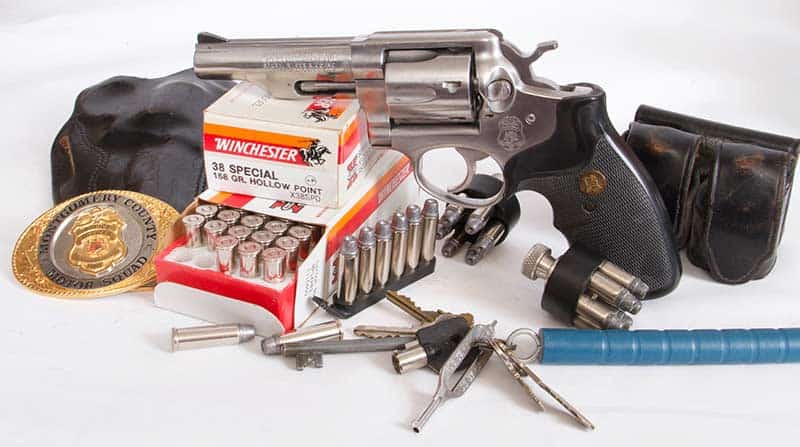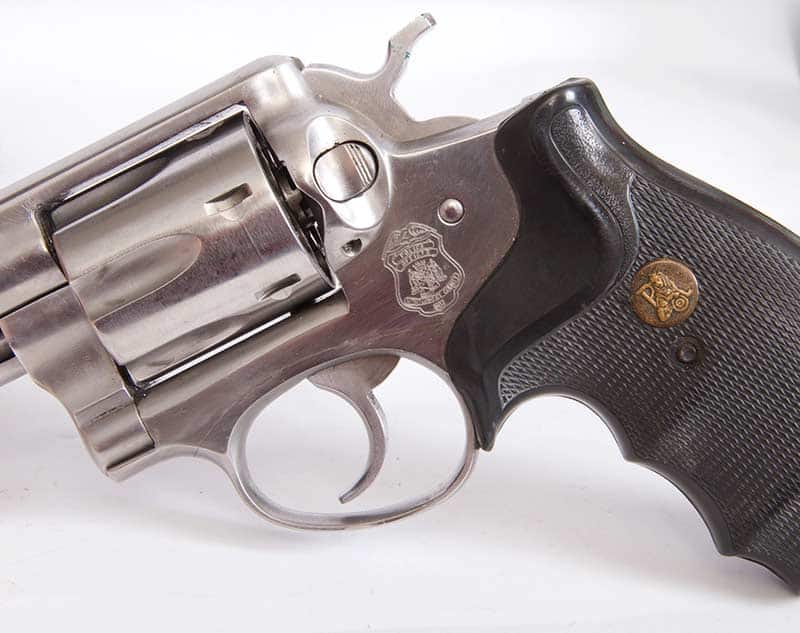On September 23, 1985, I entered the portals of the Montgomery County Police Academy, as a fresh young police recruit. We were told to report to the main lobby, later affectionately called “hitting the bricks” due to the brick floor it had. Here, we were indoctrinated to becoming police officers. Hopefully …
Shooting
Our instructors were police officers themselves, comprised mostly of 10+ year veterans. They seemed ancient compared to a bunch of raw recruits. They were a salty, savvy bunch of old-timers who seemed to know it all. Looking back now, being in their early to mid-30s, they were nothing but kids themselves. Isn’t it funny how perspective changes over time?
After going over the four basic cardinal rules of firearm safety we went over the basics of grip, stance, sight alignment, trigger pull and follow-through. Then, we were each assigned a shooting lane on the range, with our own box of cartridges and issued revolver. Remember now, this was 1985.
Our service gun was a 4” Ruger Service-Six chambered in .38 Special. Commands were given to load and holster. Oh, boy! This was it. Shooting BB guns since I was 5, then progressing to a .22 rifle and several center-fire rifles, I was familiar with the concepts of sight picture and had a pretty educated trigger-finger. But I’d never applied these skills to the revolver.
Commands were given to “watch your targets” as the bladed targets turned broadside, and the range erupted in gun fire.
DA Only
We were taught to shoot double action only. After all, we were going be cops, and that’s how cops shot. We shot thousands of rounds of ammo during firearms training. I don’t remember the brand of ammo, but it was dirty, leading fiercely, obviously low bid.
Our barrels leaded so much the bullets eventually keyholed on target. I was introduced to the Lewis Lead-Remover, which efficiently removed the lead from the barrel’s grooves.
After every shooting session, our guns and hands were covered in black soot. The smell of burnt powder, oil and Hoppes #9 was forever etched in my brain, as we scrubbed our guns. It was during this time. my love for revolvers and double-action shooting was ingrained in me.
Rules to Live By
We were told, under no circumstances, to clip any springs or work on our duty guns, to give them a better trigger or slicker action. Also, any ivory, stag or “flashy” replacement stocks were also prohibited. As time passed, I began to understand why.
“Just Shoot It!”
The Ruger Service-Six has fixed sights, unlike the Ruger Security-Six, which has adjustable sights. You’re stuck with the point of impact with a Service-Six, but its fixed sights are much more durable. My gun tended to shoot 2” left with the ammo we shot at 25 yards. When I raised this point, it was confirmed by a grizzled instructor. His stare made me feel foolish, as he grunted, “aim a little right, you’ll be alright” and walked away. The code back then was, a good shot didn’t complain, or make excuses, they just shot.
Other issues arose from other candidates and the answer was always the same,” Just shoot it! You’ll figure it out.” I guess this is where my “out of the box” philosophy comes from, just shoot the gun … you’ll figure it out …
Qualification
We shot a modified version of the PPC course for qualification since we only had a 25-yard range. A 70% or better average for three courses of fire on the B-27 target was needed to graduate.
Back then, we carried six rounds in the gun and two speed loaders, for a total of 18 rounds. I still hear the range master’s muffled voice over the intercom, through my earmuffs, “This first course of fire is 12 shots in 20 seconds … watch your targets!” Like coiled springs, we waited for the bladed target frames to turn …
Symphony of Skills
Shooting 12 shots with a revolver entails firing your first six rounds, placing your revolver in your weak hand, dumping brass, grabbing your speed loader, lining up six bullets to six chambers, releasing them, then closing your cylinder, returning your gun to your strong hand while re-establishing your grip and firing your final six rounds.
It’s a complex symphony of both gross and fine motor skills. Shear repetition made us masters at it. The total course of fire was 60 rounds, consisting of kneeling, prone, left- and right-hand barricade positions, from 7-, 15- and 25-yard distances.
Progression…
Afterwards, our instructors came up with a more practical course of fire for qualification. We started shooting on the move, taking advantage of cover and concealment, while doing “hot” tactical re-loads and real-life scenarios. The training improved, getting us to think, “what if…”
Finally …
Shooting is a perishable skill. You need practice to stay proficient. Shooting is the least used skill in police work but the most important. Conversely, some of the best street cops I worked with were terrible shots while some of the best shots were terrible street cops. Like life, sometimes it just doesn’t make sense at all.


